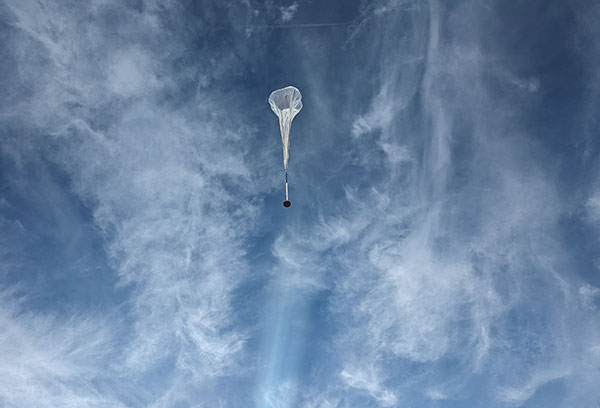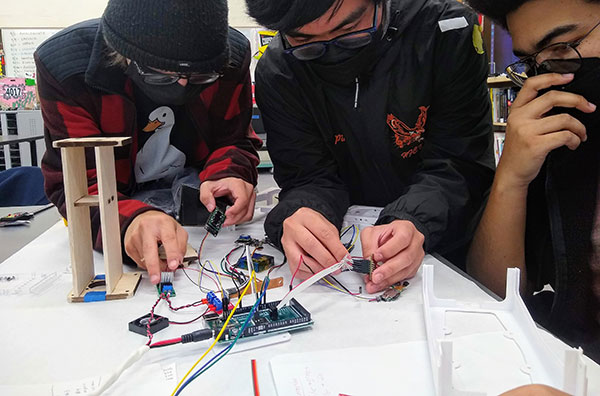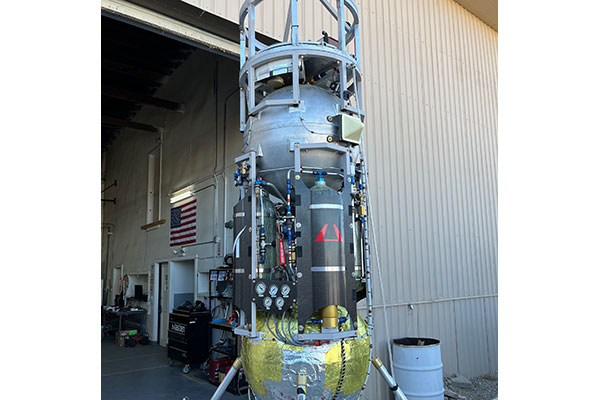Experimenting at Stratospheric Levels
Student Competition Profile: The NASA TechRise Student Challenge

This year’s challenge was to design a science or technology experiment that could be tested on a NASA-sponsored high-altitude balloon flight or rocket-powered lander.
Latest News
February 12, 2024
The NASA TechRise Student Challenge, now in its third year, is a science, technology, engineering and mathematics (STEM) competition for sixth to 12th graders, offering invaluable hands-on STEM experience and opportunity to test their own innovative solutions for space exploration and the study of Earth.
Danielle McCulloch is the program manager for NASA’s Flight Opportunities Program, which oversees the TechRise Student Challenge. We spoke to Danielle to learn more about this competition. Here’s how our conversation went.
Digital Engineering: Can you provide an overview of the TechRise competition, how it came to be and the intent of the program?
Danielle McCulloch: Led by NASA’s Flight Opportunities program and administered by Future Engineers, TechRise offers students both hands-on experience with the payload builds and flight test process, as well as the chance to contribute to NASA’s mission of exploring space and studying our planet. The Flight Opportunities program, part of NASA’s Space Technology Mission Directorate (STMD), rapidly demonstrates technologies for space exploration, discovery and the expansion of space commerce. Winning teams will design, build and prepare their payloads for flight, receiving close mentorship and support along the way.
This year’s challenge was to design a science or technology experiment that could be tested on a NASA-sponsored high-altitude balloon flight or rocket-powered lander. Sixty winning teams will receive $1,500 to build their experiments and an assigned spot for their payload on a NASA-sponsored flight test.

High-altitude balloons will ascend to an altitude of approximately 70,000 feet, where they will expose payloads to the unique thermal and atmospheric environment of the stratosphere, providing conditions for student experiments that cannot be replicated in ground-based tests.
Projects designed for the rocket-powered lander will fly for approximately 2 minutes at an altitude of 80 ft. (approximately 25 m) over a test field designed to simulate the moon’s surface. The lunar terrain includes hazards like rocks and craters, which in turn create shadowy regions that can harbor water ice—making them important sites for scientific discovery and building a sustained human presence on the Moon.
DE: Can you tell us about some of the designs that are part of the program and how they came to be?
McCulloch: Past TechRise projects addressed a wide variety of science and technology challenges, including evaluating the effects of climate change; protecting humans, electronics and various materials against radiation; testing machine learning and computing techniques for space technology; and supporting human health on long-duration space missions.
A group of approximately 275 volunteer judges with expertise in engineering, space and Earth science reviewed entries and selected winners from across the nation. Proposal evaluation criteria included the originality of their experiment idea, its impact on education and/or society, feasibility to build the experiment in the allotted timeframe and budget and the quality of the build plan.

In addition to $1,500 to build their payloads, winning teams received technical support and mentorship from Future Engineers, who helped students learn the skills they needed to turn their experiment idea into reality.
DE: Can you provide some examples of what the challenge has produced or what you expect it to produce?
McCulloch: TechRise team leads have noted that students’ perceptions of their ability to engage in STEM have positively shifted as they have worked to build and code their experiments in preparation for flight. Students have expressed a newfound interest in pursuing coding and engineering studies at the college level.
Subscribe to our FREE magazine, FREE email newsletters or both!
Latest News
About the Author
Jim Romeo is a freelance writer based in Chesapeake, VA. Send e-mail about this article to [email protected].
Follow DE





